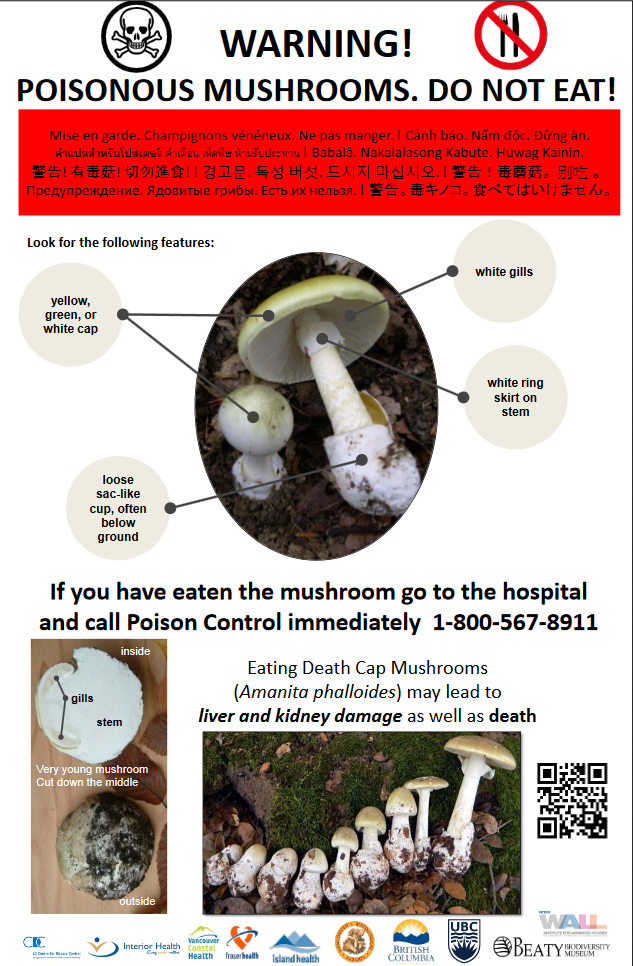The BC Centre for Disease Control (BC CDC) is warning the public not to eat an increasingly common — but potentially deadly — mushroom.

The aptly-named “death cap” mushroom was responsible for 30 poison control calls over the summer and 16 in September, according to the CDC.
The mushrooms can cause severe cramping, diarrhea, liver and kidney damage or death.
With fall weather now here in earnest, the agency is warning that the potentially killer mushrooms are sprouting up more frequently.
“Now that the rains are here, people are seeing mushrooms all over the place. The volume of calls we get about mushrooms is really dependent on the weather,” B.C. Drug and Poison Control Centre pharmacist Raymond Li said in a statement.
WATCH: ‘Death Cap’ mushroom is back

The death cap, formally known as Amanita phalloides, is the world’s most poisonous mushroom. It is also easily mistaken for other edible mushrooms like the Asian paddy straw mushroom, as well as the edible puffball mushroom when it is still young, said the CDC.

Get weekly health news
Back in 2016, a three-year-old boy in Victoria died after eating a death cap while foraging for mushrooms with this family.
This year, the CDC has partnered with the Vancouver Mycological Society to try to reduce the risk.
They’ve produced new multilingual warning posters and brochures designed to help the public identify death caps in the wild.
They’re also offering new guidelines about what to do should residents find the mushrooms growing in public places.
Death cap mushrooms are not native to British Columbia, but were introduced on the roots of trees that now line city streets.
According to a 2008 study by the Vancouver Mycological Society, they have been identified in more than 100 sites in Vancouver, and have also been reported in the Fraser Valley and Vancouver Island.
The society is asking the public to help it identify just how far the mushrooms, which thrive in urban environments, have spread by reporting sightings to their local mycological club or through the province’s invasive species working group.
WATCH: Deadly mushroom warning and air quality readings

“I generally caution against foraging in urban environments because of the added risk,” said Paul Kroeger, a founding member of the Vancouver Mycological Society.
“If you’re foraging, go to a natural forest and go with an expert; there are lots of mushroom clubs, events, and festivals.”
Anyone who believes they, their children or their pet have taken a bite of a death cap should keep the mushroom or take detailed photos to help health care workers identify it, Li said.
In the case of a suspected poisoning, the CDC said people should call poison control immediately at 1-800-567-8911.
It said people who have consumed a death cap may think they’re getting better when the initial symptoms subside after 24 hours.
But it warned that a second wave of more severe symptoms, up to and including organ failure, can occur within 72 hours of eating one.
- Cramping
- Abdominal pain
- Vomiting
- Watery diarrhea
- Dehydration









Comments